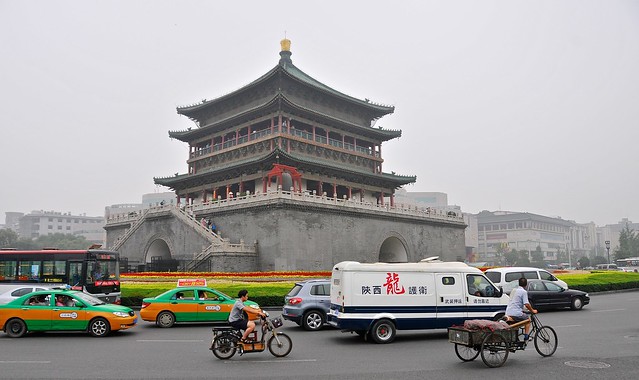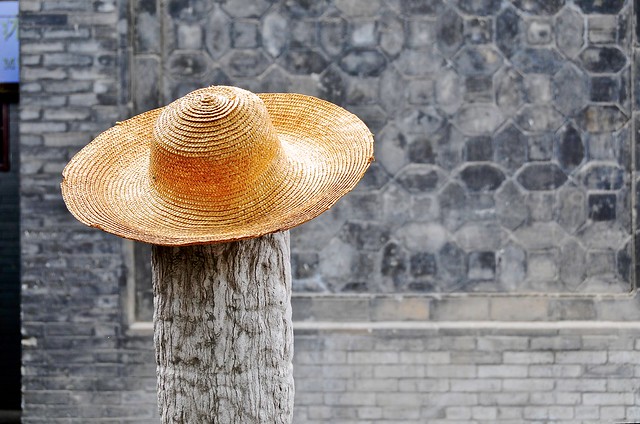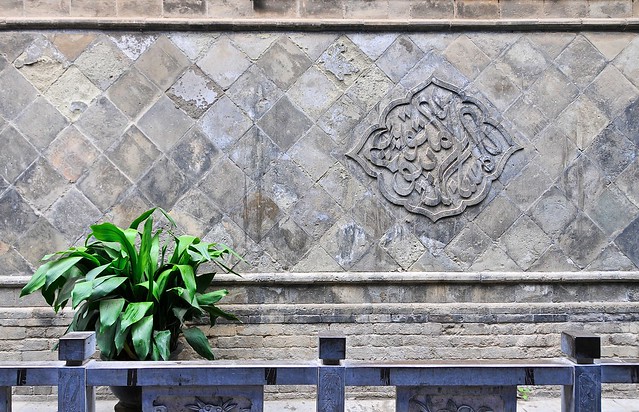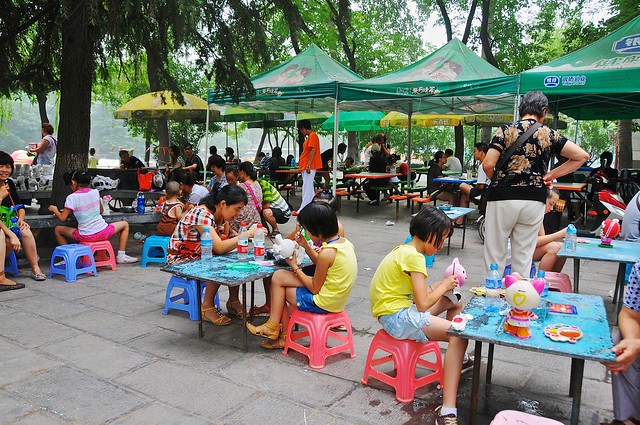Arrival & Han Tang Hostel
I arrived in Xian and found my hostel pickup with a bit of trouble: it's a huge station and thousands of people can be counted on to arrive at any given time, so it took a couple of minutes to find the person sent to meet me. This really isn't a service you expect from a bargain hostel, anyway, but it was a surprising touch. What was even more surprising—shocking even—was that the rooms in this new hostel, the Han Tang Hostel, were about as good and thoughtfully designed as you would expect from a German or Austrian hostel: sturdy and creak-free wooden beds; individual reading lights and electrical outlets for each bunk; large lockers; separate toilet, shower, and sink cubicles in each room (and beautifully designed bathrooms); and rooms that seemed designed to hold four bunks, instead of bunks being haphazardly jammed into rooms too small for them. All this, for the bargain price of 30 yuan, which represented the high value of all the hostels I stayed at in China.On the other hand, they try to make their money back with overpriced food and tours. The staff are overworked, and while they may try to be helpful, they really don't know much and can't offer advice other than the tours they are taught to sell (and they don't even know too much about them, as they couldn't answer some questions I had about their Three Gorges cruises). They don't know how to get to local places by local bus, and don't know where bus stations are. If you want a tour or want some food, they'll be able to help you, though. The "common area" on the ground floor functions mainly as a cafe, and not as a place for travelers to gather and relax, even though it's the only place you can get wi-fi. If you are comfortable with a hostel as primarily a place to sleep, as I am, it's a great place to base yourself, especially since there's no shortage of online information about Xian.
Xian: the eastern terminus of the Silk Road
I'm already two months into my trip now, but it's only in Xian that I'm really starting the raison d'etre of this trip: to see the Silk Road. Then, as now, Xian was really the introduction to what we popularly think of as big, bustling, populated China—China proper. West of Xian the country is drier and less populated, less prosperous, and more difficult. Mountains rise up and make travel difficult, with Gansu province's Hexi Corridor being the main conduit of travel, sandwiched as it is between the Tibetan plateau and the Gobi desert. The Hexi Corridor's western terminus ends in Xinjiang and the Taklamakan desert, where the Silk Road splits into two: the northern route goes north around the desert while the southern route goes along the southern route, below the Tibetan plateau. The northern and southern routes join up again at the western edge of the desert, in Kashgar, and then split up again to take various paths through the Central Asian mountain ranges.Despite being the eastern terminus of the route, Xian remains decidedly Chinese in feel, with fairly scant evidence (aside from its wealth) of western influence. Although it has a noteworthy Muslim quarter, the Muslims are Hui and number only about 50,000.
Xian is where I really got tired of paying to see things. Attractions are quite expensive in China, with cheap sites being 25 yuan, mid-range being 60 yuan, and expensive attractions being 150 yuan or more. In comparison, most temples in Japan (a much more expensive country) were 500 yen, or about 30 yuan. Also keep in mind that my hostel in Xian was 30 yuan per night, and that 150 yuan was basically my daily budget for everything, including long-distance transportation.
If these are expensive for me, they're also expensive for Chinese. Or, expensive for average Chinese. For the most part, though, Chinese who can afford to travel can afford to pay a lot. When you have Chinese investors buying real estate in Manhattan, you begin to understand that if even only 1% of Chinese can afford to travel, that still makes 14 million affluent travelers. China can basically price their attractions at almost any level and still have enough domestic demand, and the somewhat perverse result is that Western prices (or more) are charged for attractions that fall to standards well below what we would expect in the West.
 |
| The Bell Tower is surrounded by a traffic circle and is accessed by underground tunnels. The 27 yuan entrance fee ensured I didn't go in. |
 |
| Hat on post at a mosque. |

